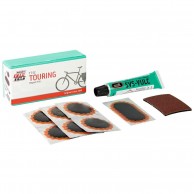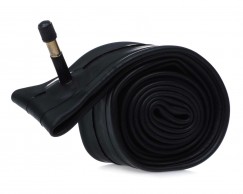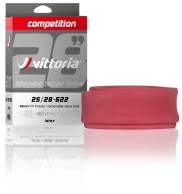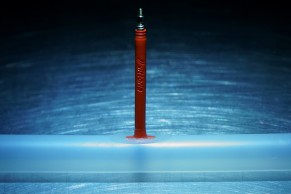Differences between Butyl, Latex, and TPU tubes
Although tubeless tires are expanding, the majority still prefer the simplicity of the system with a tube, which still has a lot to offer thanks to its latest generation models that achieve minimal weights and fantastic rolling resistance.

Long live the tubes
Although for those who practice sports cycling, in any of its modalities, tubes may seem something of the past in favor of the increasingly common system of tubeless tires, reality tells us that there is still a large majority who maintain the traditional option of tires with tubes on their bikes.
Good performance in most situations and, above all, the absence of maintenance and simplicity when repairing punctures continue to be the arguments that make tubes still fully present in worlds such as road cycling or urban commuting.
RECOMENDADO

Tips for getting up early to ride

Complete list of the highest paid cyclists of 2025

How many calories are burned when cycling

What is heart rate variability and how does it affect the cyclist?

Change wheels if you want to transform your bike's behavior

What bike size do you need? Here's how to find out

Even the user of tubeless tires cannot do without their use as they continue to be the life insurance to repair efficiently when suffering a puncture in the middle of a route, so it is something that cannot be missing in any cyclist's repair kit.
Traditionally, tubes have been made using butyl rubber, except for the exclusive high-performance models that chose latex to improve rolling quality.
In recent times a new actor has joined the offer, tubes made with thermoplastic polyurethane or TPU that have managed to evolve a technology that had remained practically stagnant since the dawn of cycling.
Butyl tubes
These are the conventional rubber tubes that we have all used, and in many cases continue to do so.
It is a cheap product that performs its task really well, achieving a great retention of air that means in many cases we do not have to worry about tire pressure for weeks.
In addition, butyl is a rubber with a considerable capacity for absorption, which results in greater riding comfort. Also, the great ease of repair using conventional patches, even on the go, or replacement must be added.

In addition to conventional models, we can find ultralight versions that manage to reduce weight by using a thinner rubber that, on the other hand, causes it to lose much of its absorption capacity as it is a less elastic material. It is also not uncommon to find puncture-proof versions that include a sealing liquid inside capable of repairing small perforations.
The downside of this type of tube is its weight, which being on the outside of the wheel is the main responsible for the rolling resistance they bring to the tires under which they are used.
Latex tubes
Latex is a natural rubber of very high elasticity that is used for a myriad of applications, among them, high-performance bicycle tubes.
This type of tube has traditionally been used inside competition tubulars precisely because of its high elasticity and lower weight than a conventional tube. Also, those looking for a better roll of their tires use them despite the fragility when mounting them and that their repair in case of puncture is more delicate.
 The great elasticity of latex makes it fully adapt to the inside of the tire, reducing friction favoring the adaptation of the tire to the road, so the rolling quality improves substantially even though the weight saving is not excessively noticeable compared to conventional tubes.
The great elasticity of latex makes it fully adapt to the inside of the tire, reducing friction favoring the adaptation of the tire to the road, so the rolling quality improves substantially even though the weight saving is not excessively noticeable compared to conventional tubes.
They also have a greater resistance to punctures due to this elasticity that makes it more difficult for spikes to pierce them.
The main problem with using latex in tubes is its great porosity, which causes them to lose air progressively, something that is not a problem over a route, but forces us to check our tire pressure daily.
TPU tubes
The real evolution of the tube and tire system has come from the hands of thermoplastic polyurethane, a synthetic material that allows the manufacture of tubes with a huge capacity to retain air, a tremendously reduced weight and volume, and great elasticity.
The combination of these qualities makes the improvement in rolling resistance of the tires under which we mount them enormous, getting very close to what we get when we use the tubeless system.
Like latex tubes, their elasticity is responsible for their characteristics, including greater resistance to punctures although, when these occur, the repair requires the use of specific patches.

Although the cost of TPU tubes is higher than latex or butyl, the significant gain they provide in terms of rolling resistance and lightness well compensates the extra expense, especially considering the longer duration of this type of tube.
Finally, we cannot forget another aspect, the reduced space they occupy when they are not inflated, which together with their lightness, makes them the perfect option to occupy a space in our repair kit, even for those who prefer to use the tubeless system.